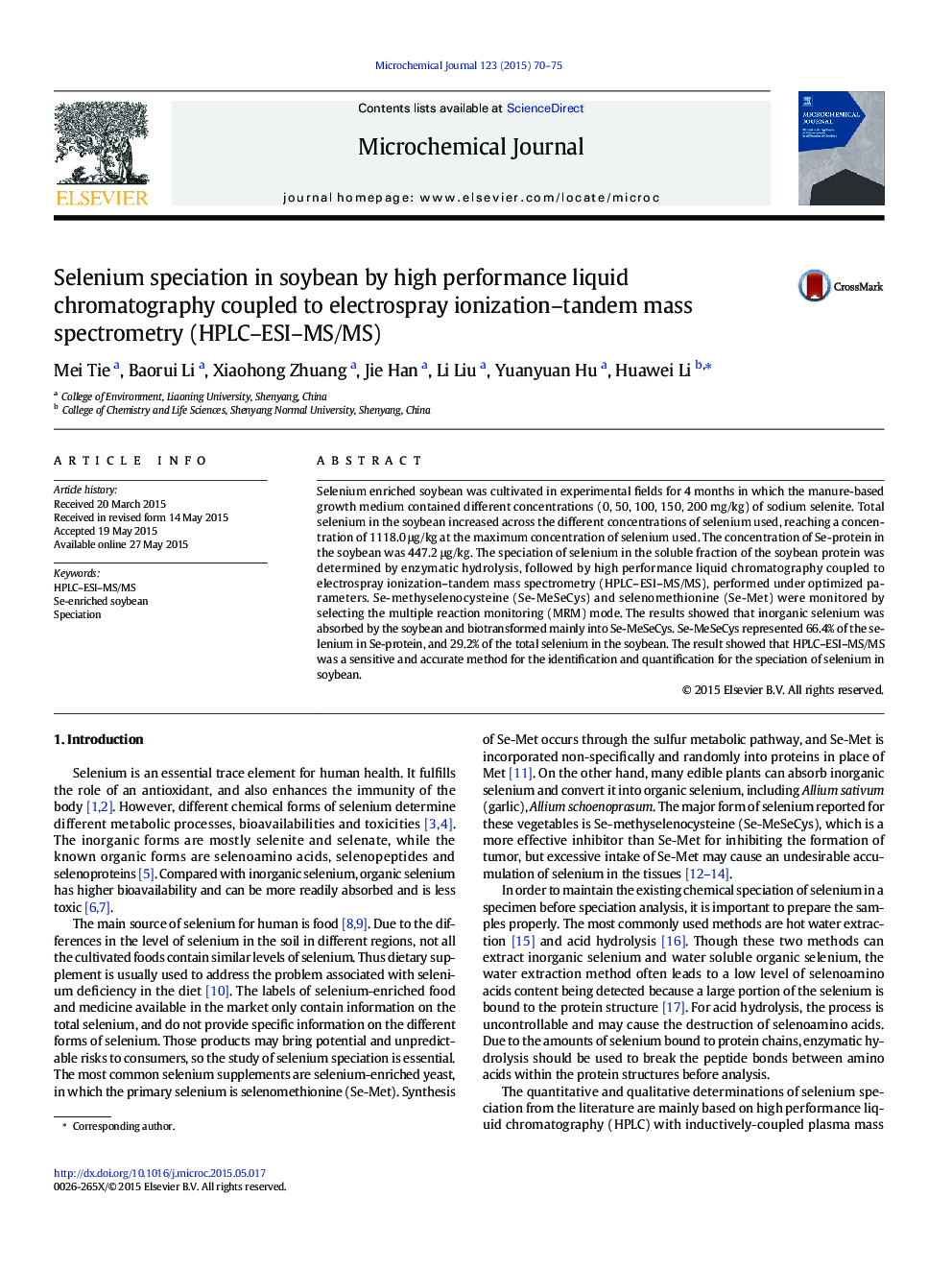| Article ID | Journal | Published Year | Pages | File Type |
|---|---|---|---|---|
| 1227642 | Microchemical Journal | 2015 | 6 Pages |
•Total Se and Se-proteins of the cultivated soybean were determined.•Enzymatic hydrolysis was used to study the speciation of selenium in the soluble proteins of soybean.•HPLC-ESI-MS was applied to the quantitative and qualitative determination of selenoamino acids.
Selenium enriched soybean was cultivated in experimental fields for 4 months in which the manure-based growth medium contained different concentrations (0, 50, 100, 150, 200 mg/kg) of sodium selenite. Total selenium in the soybean increased across the different concentrations of selenium used, reaching a concentration of 1118.0 μg/kg at the maximum concentration of selenium used. The concentration of Se-protein in the soybean was 447.2 μg/kg. The speciation of selenium in the soluble fraction of the soybean protein was determined by enzymatic hydrolysis, followed by high performance liquid chromatography coupled to electrospray ionization–tandem mass spectrometry (HPLC–ESI–MS/MS), performed under optimized parameters. Se-methyselenocysteine (Se-MeSeCys) and selenomethionine (Se-Met) were monitored by selecting the multiple reaction monitoring (MRM) mode. The results showed that inorganic selenium was absorbed by the soybean and biotransformed mainly into Se-MeSeCys. Se-MeSeCys represented 66.4% of the selenium in Se-protein, and 29.2% of the total selenium in the soybean. The result showed that HPLC–ESI–MS/MS was a sensitive and accurate method for the identification and quantification for the speciation of selenium in soybean.
